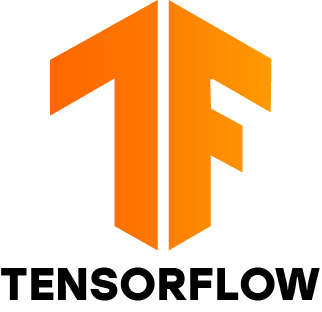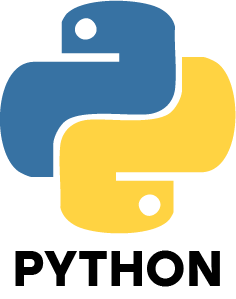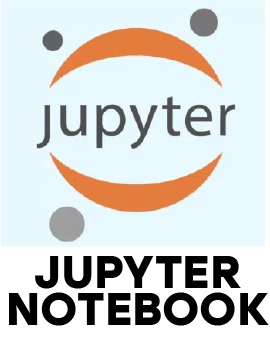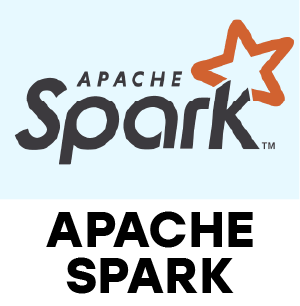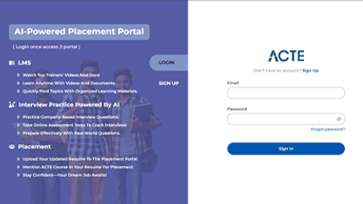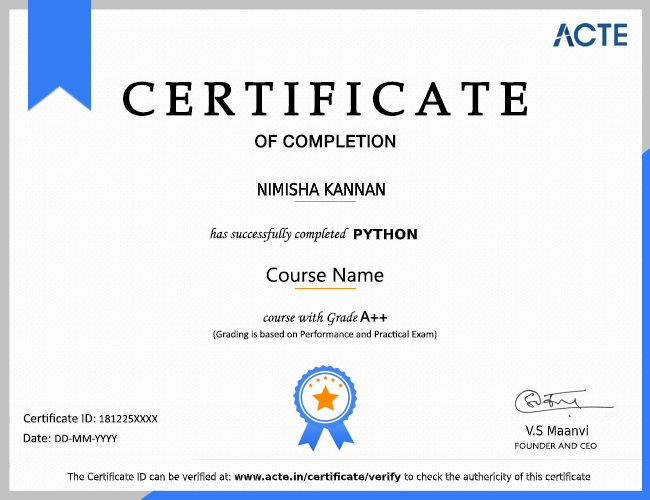The Master of Data Science programme will teach you everything you need to know about Data Science, real-time analytics, statistical computing, SQL, parsing machine-generated data, and finally the domain of Deep Learning in Artificial Intelligence. You will also learn how to use Big Data Analytics with Spark for Data Science in this programme. This programme was created by industry experts, and it includes 10 courses and 30 industry-based projects.
For the best training experience, this Data Science Online Course, developed in collaboration with IBM, includes exclusive IBM hackathons, masterclasses, and Ask-me-anything sessions. Through live interaction with practitioners, practical labs, and industry projects, this Data Science certification training provides hands-on exposure to key technologies such as R, Python, Machine Learning, Tableau, Hadoop, and Spark.
Additional Info
Introduction:
In the 2021 Magic Quadrant for Data Science and Machine Learning, IBM is positioned as a Leader. A collaboration with Simplilearn and IBM introduces students to integrated blended learning, preparing them to be experts in Artificial Intelligence and Data Science. This Data Science course, developed in collaboration with IBM, will prepare students for jobs in Artificial Intelligence and Data Science.
IBM, headquartered in Armonk, New York, is a leading provider of cognitive solutions and cloud platforms, as well as a wide range of technology and consulting services. IBM invests $6 billion in R&D each year and has received five Nobel Prizes, nine US National Medals of Technology, five US National Medals of Science, six Turing Awards, and ten inductions into the US Inventors Hall of Fame.
Who can Start Data Science Certification Online Course:
What can I expect from these Data Science courses co-created with IBM?
You will receive certificates from IBM (for IBM Data Science courses) and Simplilearn for the courses in the learning path upon completion of this Data Scientist online course. These certificates will attest to your expertise in Data Science.
In addition, you will receive the following:
- Experts from IBM lead a masterclass.
- Ask me anything sessions with IBM executives.
- IBM Industry-recognized Data Scientist Master's certificate from Simplilearn Hackathons.
What are the Learning Goals?
- One of the hottest jobs right now is data scientist. The U.S. Bureau of Labor Statistics anticipates a 28 percent increase in the number of jobs in the data science field through 2026.
- Simplilearn's Data Science certification course .
- Developed in collaboration with IBM.
- Encourages you to master statistics.
- Hypothesis testing.
- Data mining.
- Clustering.
- Decision trees .
- Linear and logistic regression.
- Data wrangling.
- This Data Scientist course provides comprehensive Data Science training by combining online instructor-led classes with self-paced learning developed in collaboration with IBM.
- This Data Science certification course concludes with a capstone project designed to reinforce the learning by creating a real-world industry product that incorporates all of the key concepts covered throughout the programme.
- The skills emphasised in this course will help you prepare for the role of Data Scientist.
Skills:
- Learn everything there is to know about data structure and data manipulation.
- Understand and apply linear and nonlinear regression models, as well as classification techniques, to data analysis.
- Learn about supervised and unsupervised learning models such as linear regression, logistic regression, clustering, dimensionality reduction, K-NN, and pipeline.
- Use the SciPy package and its sub-packages such as Integrate, Optimize, Statistics, IO, and Weave to perform scientific and technical computing.
- Learn about mathematical computing with the NumPy and Scikit-Learn packages.
- Learn about the various components of the Hadoop ecosystem.
- Learn how to work with HBase, its architecture, and data storage, as well as the differences between HBase and RDBMS, and how to partition data using Hive and Impala.
- Learn about MapReduce and its characteristics, as well as how to ingest data with Sqoop and Flume.
- Learn about recommendation engines and time series modelling, as well as the principles, algorithms, and applications of machine learning.
- Learn how to use Tableau to analyse data and create interactive dashboards.
Roles and Responsibilities:
- Scientist of Data:Aside from designing and implementing scalable code, create high-quality applications.
- Analyst for Analytics and Insights:Investigate reported data quality issues and devise solutions to correct them.
- Engineer in Artificial Intelligence and Machine Learning:Deploy models in SageMaker and integrate Machine Learning models in web applications using Lambda functions and API Gateway.
- Data Engineers and Analysts:Understand the data, perform data cleansing and transformation, analyse the results, and present the findings in the form of reports and dashboards.
- Data Scientist, Junior:Utilize advanced statistical techniques and tools to comprehend operating behaviour and develop algorithms with advanced prescriptive and predictive capabilities.
- Scientist in Practice:Create various Machine Learning models to aid in the extraction of intelligence for business products.
- Data Engineer.
- Architect of Applications.
- Architect of Infrastructure.
- Architect for Enterprises.
- Scientist of Data.
- Analyst of Data.
- Engineer, Data.
- Statistician.
Advantages of this Course:
1. Cut the Fluff and Stick to the Essentials:
- No one expects a professional data scientist to derive any AI algorithms from first principles.
- You also don't need to delve deeply into the (relatively) trivial history behind each algorithm, nor do you need to learn SVD (Singular Value Decomposition) or Gaussian Elimination on a real matrix without the assistance of a computer.
- An academic degree covers so much material that is never used on the job! Yes, you must have an intuitive understanding of the algorithms.
2. Learning from instructors with real-world experience rather than PhD scientists:
- Now, where should you get your training? From PhD academics who have never worked on a real professional project but have published extensively, or from instructors who have worked on real-life professional projects? Teachers and instructors in colleges and universities frequently fall into the former category, and you are extremely fortunate if you have an instructor who has that invaluable component known as industry experience.
- The latter are uncommon and difficult to come by, and you are fortunate – even remarkable – to be studying under them.
3. Working with the Most Up-To-Date Technology Stacks:
- Now, who is more likely to get you a job: teachers who teach what they studied ten years ago or professionals who work with the most up-to-date tools in the industry? It is undeniably true that people with industry experience can assist you in determining which technologies to learn and master.
- Academics, on the other hand, may be working with technology stacks that are more than ten years old! Please try to select instructors who have prior work experience.
4. Individual Focus:
- Individual attention cannot be provided to each student in a college or MOOC with thousands of students.
- However, it is true that in data science programmes, every student will receive individual attention tailored to their needs, which is exactly what you require.
- Every student is unique, and they will each have their own interpretation of the projects available.
- The most significant advantage that such students have over college and MOOC students is the customised attention that is available when batch sizes are less than 30-odd.
5. Guidance for GitHub Project Portfolios:
- Every college professor will advise you to create a GitHub project portfolio, but they will not be able to give your individual profile their full attention.
- The reason for this is that they have far too many students and demands on their time to devote to individual project portfolios and actually mentor you in designing and establishing your own project portfolio.
- However, data science programmes are unique, and instructors can truly mentor you individually in designing your project portfolios.
6. Mentoring even after you've been placed in a company and are working on your own:
- Because your domains will be so different, no college professor will be able or even available to help you once you are placed in the industry.
- However, when industry professionals become instructors, the storey is very different.
- You can even go to them or contact them for guidance after placement, which is something that most academic professors will not be able to do unless they have industry experience as well, which is extremely rare.
7. Lower Cost Requirements:
- It's one thing to be able to pay for your own PhD doctoral tuition.
- It's quite another to learn the same skills for less than 1% of the cost of a PhD in, say, the United States.
- Not only is it less demanding financially, but you also don't have to worry about being able to pay off massive student loans through industry work and fat paychecks, which can often come at the expense of compromising your health or family needs.
8. Significantly Reduced Time Requirements:
- A PhD degree typically takes 5 years to complete.
- A data science programme can get you job-ready in a matter of months.
- Why don't you decide which option is best for you? This is especially true if you already have job experience in another domain or are over the age of 23-25, as completing a full PhD programme could put you on the wrong side of 30 with almost no job experience.
- Please apply for the data science programme, as time spent working in your 20s is critical for most companies hiring today, as they consider you to be a good ‘çultural fit' for the company environment, especially if you have less than 3-4 years experience.
Career path of Datab Science Certification training:
A learning path is a collection of specific courses related to a specific profession or career interest. The path you take will be directly related to the skill sets required to succeed in your respective career. The Data Science Learning Path focuses on mastering and developing skills in the field of data science. It is a high-demand path that many students are taking in order to achieve their goal of becoming Data Scientists.
The well-structured module provides students with a comprehensive and valuable collection of resources that will benefit both professionals and those entering the field for the first time. It is easy for a student who is unfamiliar with Data Science or its learning path to become perplexed by the options available. This blog post is intended to help you understand the fundamentals so that you can make an informed decision.
Industry Trends:
- The shortage of data science talent is well known.
- What's new is that automation tools have made it possible for anyone to participate in AI development.
- Analysts and subject matter experts can turn their ideas into models and prepare data much faster with GUI-based data science tools and AutoAI.
- Beginners can be quickly onboarded.
- These tools, combined with access to open source packages, also assist developers in becoming data science powerhouses.
- This has reached critical proportions.
- According to Gartner, application developers and software engineers will be the primary AI implementers in the next two to five years.
- Data science and artificial intelligence are not cheap.
- You must put solutions in place, maintain data, move data, and invest in hardware.
- The cost of training data scientists and delivering AI and data science models can be prohibitively expensive.
- IBM Cloud Pak for Data assists you in reducing these and other costs.
- Based on a Red Hat® OpenShift® foundation, it enables you to reduce operational costs for data access by 70%, achieve container management efficiencies of up to USD 14.4 million, and experience other cost savings of up to USD 1.2–3.4 million.
- 3 Having a governed, curated library of open source packages available without having to build from scratch saves money.
- You must be able to host your data and models on multiple clouds or behind a firewall as required.
- As a result, you should not be tied to a single cloud vendor. This introduces unneeded risk.
- You can use IBM Cloud Pak for Data to create your own hybrid multicloud strategy.
- You can also use data and AI services from a broader ecosystem, including those from open source communities, with IBM Cloud Pak for Data.
- Instead of relying on specific tools or skills, you can make investments that are proportional to your company's needs.
- Industry leaders are demonstrating the value of combining open source and proprietary tools to automate, predict, and optimise.
- These capabilities allow you to optimise workforce scheduling, create supply and demand plans based on what-if analysis against millions of variables, and allocate resources when demand spikes.
- With the right data platform, you can meet these challenges more easily than ever before.
- Furthermore, by combining IBM Cloud Pak for Data and IBM Watson Studio, you can use out-of-the-box industry accelerators and decision optimization to turn your ideas into business-ready results.
- They're using AI to predict, and a different tool, decision optimization, to tell them what to do with those predictions.
- Prediction and optimization in a data and AI platform can help you reduce errors and accelerate time to value when planning inventory, allocating resources, or scheduling talent.
- A paper manufacturer, for example, used the ability to predict demand and prioritise orders to save USD 50 million in excess inventory and waste.
- IBM Watson Studio includes the ability to predict and optimise. Including it in a multicloud AI platform with open source data science has a number of advantages.
Payscale:
1. Data Analytics is thought to be one of the highest-paying job roles in the country.
2. According to recent industry studies, the median CTC for Data Analytics professionals in India is Rs. 12 lakh per year.



